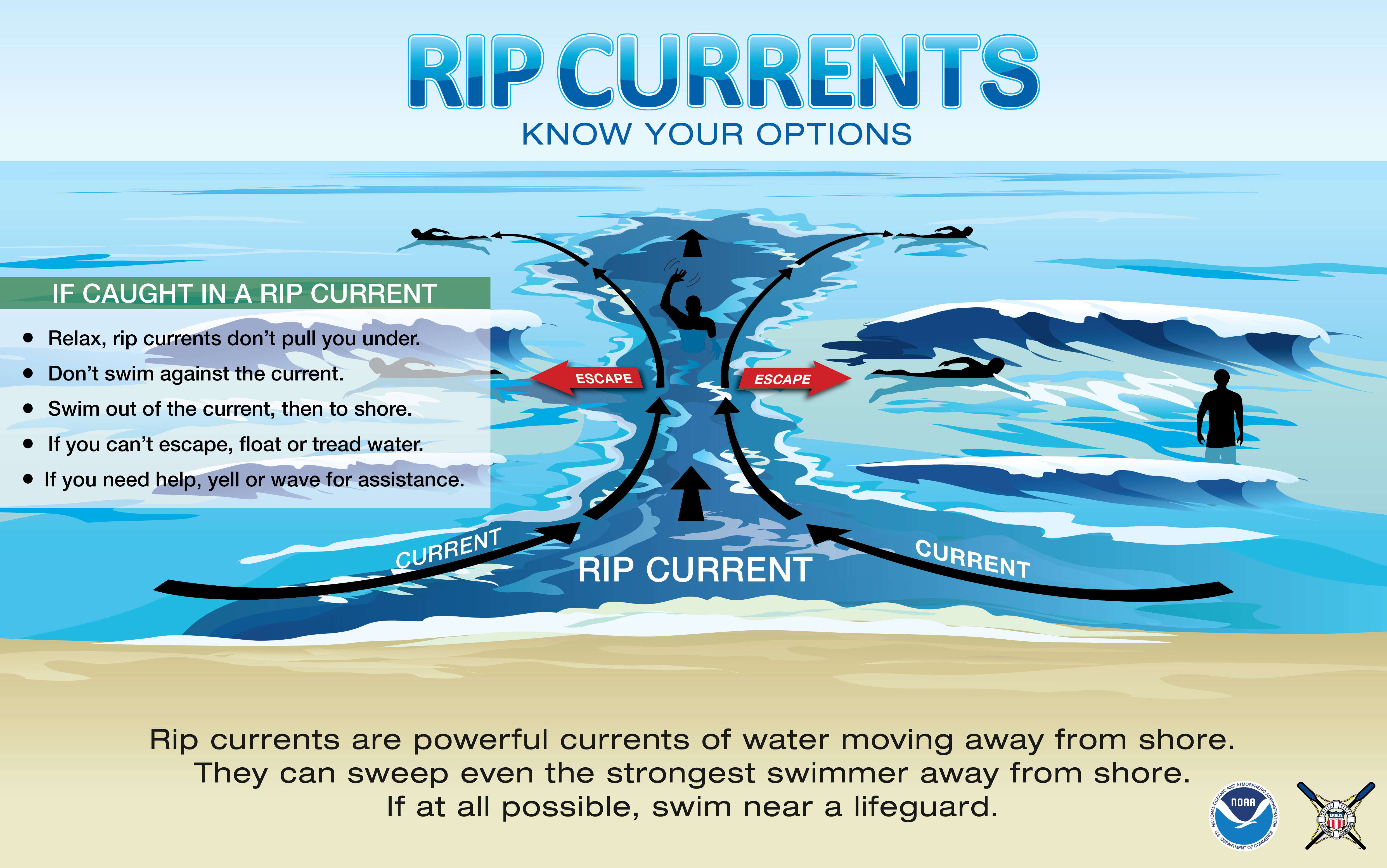
 This summer has been a tragic one along Florida’s coastlines. There have been multiple deaths due to rip currents, in both the Atlantic Ocean and Gulf of Mexico. About 100 people drown from rip currents along U.S. beaches each year, according to the United States Lifesaving Association. And more than 80 percent of beach rescues annually involve rip currents. What are rip currents, and what do you need to know about them? The Orlando Sentinel explains:
This summer has been a tragic one along Florida’s coastlines. There have been multiple deaths due to rip currents, in both the Atlantic Ocean and Gulf of Mexico. About 100 people drown from rip currents along U.S. beaches each year, according to the United States Lifesaving Association. And more than 80 percent of beach rescues annually involve rip currents. What are rip currents, and what do you need to know about them? The Orlando Sentinel explains:
What is a rip current?
Rip currents are narrow columns of water flowing rapidly away from the beach, like a swift stream within the ocean. They don’t pull swimmers under water, but can carry them out a fair distance from shore.
Low spots along the beach, or areas near jetties or piers, are often where rip currents form. They can be connected to stormy weather but also sometimes occur during sunny days.
They can be hard to detect because the surface water often appears calm.
The current can flow as swiftly as eight feet per second, faster than even a strong swimmer can overcome, according to the National Oceanic and Atmospheric Administration.
“If you’re caught in one and you try to swim straight in, you’re not going to be able to,” said Daniel Barnickel of Palm Beach County Ocean Rescue.
How can someone escape a rip current?
The most frequent advice from beach rescue teams and weather forecasters is to not panic and look for a chance to swim parallel to the shore until the swimmer is out of the rip current’s grip. It will eventually dissipate but might leave the swimmer out in deeper water.
It’s nearly impossible to fight the current directly. Many swimmers who get in trouble tire themselves out trying to get back to the beach, lifeguards say. If possible, it’s best to swim near a lifeguard station.
“Most of our rip current rescues happen outside the guarded areas because we’re not there to prevent it from happening,” Barnickel said.
What warning systems exist for rip currents?
Flags with different colors are used to warn beachgoers of various hazards.
Three flags warn of surf and rip current conditions. Red means a high hazard, yellow means a moderate threat and green means low danger. There’s also purple for dangerous sea life, like jellyfish, and double red when a beach is closed for any reason.
The National Weather Service posts rip current risks on its websites around the coasts and has developed a computer model that can predict when conditions are favorable for their formation up to six days in advance for the U.S. East and Gulf Coasts, Puerto Rico, Hawaii and Guam….
Should someone attempt a rip current rescue?
It can be dangerous to try to rescue someone caught in a rip current, officials say. Often the people trying to perform the rescue can get into trouble themselves. It’s best to find a lifeguard, if there is one, or call 911 if a struggling swimmer is spotted. People on shore can also try to tell the person to swim parallel to shore.
“Never swim alone. And always make sure that there’s an adult. And make sure that you don’t overestimate your abilities. Know your limits,” Barnickel said.
You can read the full article here.
Make sure you review rip current safety and check on current conditions before entering the ocean. If you live near the beach and will have family or friends coming for a visit, sit down and have a conversation about rip currents in advance of any trip to the beach. Don’t assume people know what they need to in order to be safe. Take the initiative to share your knowledge and help keep others – as we as yourself – safe!

What is the Four Percent Rule?
If you are on the edge of retirement or a current retiree, you may be familiar with the phrase, the Four Percent Rule. The concept is used to help...

6 Signs an Employee Is Ready for Leadership
Promoting an employee to a leadership role is an important decision. But is that employee ready for it? How do their current skills and experience...
